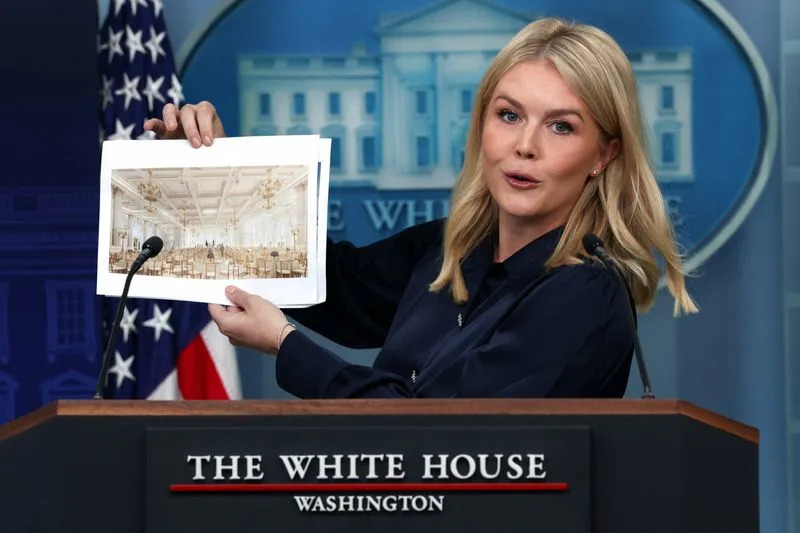President Donald Trump is set to begin his most significant architectural undertaking at the White House, a sprawling $200 million ballroom, signaling a dramatic shift in the executive mansion’s capacity for grand-scale entertaining. This ambitious construction project, planned to break ground in September, underscores a desire to imbue the iconic residence with a new level of lavishness, reminiscent of his private estates.
For years, the former real estate developer has expressed a personal conviction that the White House, while historically significant, lacked a sufficiently large venue capable of accommodating extensive guest lists for state dinners and official events. This long-held belief now culminates in plans for a colossal 90,000-square-foot facility, a scale typically associated with luxury hospitality rather than government residences.
White House press secretary Karoline Leavitt confirmed the substantial $200 million cost will be fully covered by donations from President Donald Trump himself and other private contributors, alleviating concerns about taxpayer burden. Construction is projected to conclude “long before” the end of Trump’s current term in January 2029, promising a completed venue ready for use during his presidency.
This endeavor marks potentially the most extensive renovation to the White House since President Harry Truman’s comprehensive overhaul in 1952. The executive mansion, originally finished in 1800 and partially rebuilt after its burning by British forces in the War of 1812, has witnessed numerous modifications over centuries, yet few have matched the sheer scale of this proposed expansion.
Historically, presidents have utilized the intimate State Dining Room for smaller gatherings and the larger East Room for more prominent VIP lists. On occasions requiring even greater capacity, temporary tents have been erected on the South Lawn. The new ballroom, designed to comfortably seat 650 people, aims to provide a permanent, stately solution for these grand events, moving beyond ad-hoc arrangements.
The design aesthetic of this new White House addition draws clear parallels to Trump’s personal residence, the Mar-a-Lago club in Palm Beach, Florida, known for its grand and smaller ballrooms adorned with glittering chandeliers and gold flourishes. Interestingly, President Donald Trump had previously offered to finance a $100 million ballroom at the White House in 2010 during the Obama administration, an offer that ultimately went unanswered.
As part of this significant infrastructure project, the East Wing of the White House will undergo “modernization,” necessitating the temporary relocation of offices, including that of First Lady Melania Trump. Despite the dramatic changes, the White House has sought to reassure traditionalists, stating the new facility’s theme and architectural heritage will be “almost identical” to the existing historical structure, aiming for seamless integration.
In recent weeks, extensive planning meetings have involved President Trump, White House staff, the National Park Service, the White House Military Office, and the U.S. Secret Service to meticulously discuss design features and logistical considerations. This collaborative effort highlights the complex nature of adding such a substantial structure to a landmark property, ensuring both security and historical integrity.






Leave a Reply